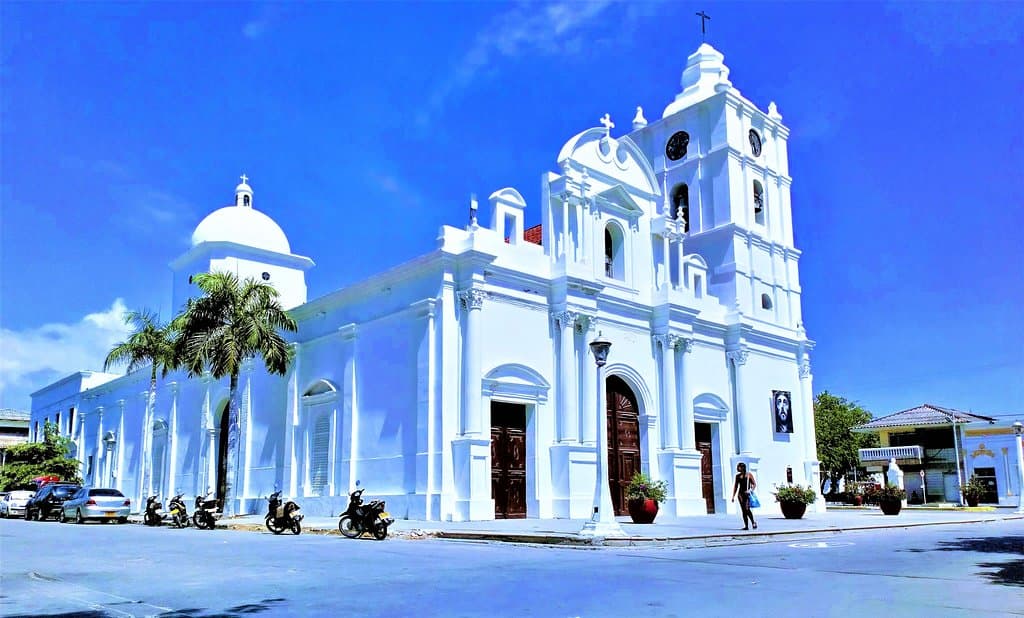Vía Parque Isla de Salamanca
A UNESCO Biosphere Reserve and unique 'Vía Parque,' this natural wonder boasts vital mangrove forests and is a premier destination for birdwatching.
Highlights
Must-see attractions

Social
From TikTok & Reddit
Best Time
Peak bird activity
Vía Parque Isla de Salamanca
Best Time
Peak bird activity
Highlights
Must-see attractions
A UNESCO Biosphere Reserve and unique 'Vía Parque,' this natural wonder boasts vital mangrove forests and is a premier destination for birdwatching.
"We are ecotourism, we are river, swamp, sea, come live the experience of sharing with nature."
Book a Local Guide
Enhance your experience with a knowledgeable local guide who knows the best spots for wildlife viewing.
Pack for the Tropics
Bring insect repellent, sunscreen, a hat, and light clothing for comfort in the humid climate.
Highlights
Discover the most iconic attractions and experiences
Mangrove Forests
Throughout the park
Explore the intricate beauty of the mangrove ecosystems, a vital habitat for diverse wildlife.
Birdwatching Paradise
Various observation points
Spot a stunning array of avian species, including the Pied Puffbird and mangrove hummingbird.
Magdalena River Delta
Coastal areas
Witness the unique landscape formed by sediment accumulation from the Magdalena River.
Plans like a pro.
Thinks like you
Planning Your Visit
Best Time for Birdwatching
Protecting the Mangroves
Best Times
Insider Tips
from TikTok, Instagram & Reddit
Book a Local Guide
Enhance your experience with a knowledgeable local guide who knows the best spots for wildlife viewing.
Pack for the Tropics
Bring insect repellent, sunscreen, a hat, and light clothing for comfort in the humid climate.
Binoculars are Key
Essential for birdwatching! Get a closer look at the incredible variety of avian life.
Respect the Environment
Help protect this fragile ecosystem by not leaving trash and avoiding fires.
Tips
from all over the internet
Book a Local Guide
Enhance your experience with a knowledgeable local guide who knows the best spots for wildlife viewing.
Pack for the Tropics
Bring insect repellent, sunscreen, a hat, and light clothing for comfort in the humid climate.
Binoculars are Key
Essential for birdwatching! Get a closer look at the incredible variety of avian life.
Respect the Environment
Help protect this fragile ecosystem by not leaving trash and avoiding fires.
What Travellers Say
Reviews Summary
Visitors consistently praise the park's stunning natural beauty and the incredible biodiversity, especially for birdwatching. The experience is often described as impressive and a great way to connect with nature. Some reviewers highlight the importance of local guides for a richer understanding of the ecosystem.
"Great tour and beautiful nature. Thanks for the. Experience!"
Guus G
"Impressive! From the scenery to the staff responsible for my visit!"
Gissella Linero
"We are ecotourism, we are river, swamp, sea, come live the experience of sharing with nature"
Jhon Ariza
What People Like
What People Dislike
Frequently Asked Questions
🚇 🗺️ Getting There
The park is accessible via the road connecting Santa Marta and Barranquilla, which runs through the park itself. Many visitors opt for guided tours that include transportation from nearby cities like Santa Marta or Barranquilla.
Yes, it's a popular day trip from both Santa Marta and Barranquilla. Guided tours are readily available and often recommended for the best experience.
Exploring with a local guide is highly recommended to discover hidden spots and learn about the biodiversity. Boat tours through the mangroves are also a fantastic way to experience the park's aquatic ecosystems.
As a National Natural Park of Colombia, there are typically entrance fees. It's advisable to check the official Parques Nacionales Naturales de Colombia website or inquire with tour operators for the most current pricing.
The main 'Via Parque' road allows for car and bus access. For deeper exploration, especially into the mangrove areas, boat tours are the primary mode of transport.
🎫 🎫 Tickets & Entry
While not always mandatory for independent travel, booking guided tours in advance is highly recommended, especially during peak seasons. This ensures availability and a well-organized experience.
Operating hours can vary, and it's best to confirm with the park authorities or your tour operator. Generally, parks are open during daylight hours.
For general tourism, standard park entry is usually sufficient. However, if you plan on specific activities like research or extensive photography, it's wise to check with Parques Nacionales Naturales de Colombia for any additional requirements.
Yes, you can visit independently, but hiring a local guide is strongly advised to fully appreciate the park's biodiversity and unique features.
The most reliable way is through reputable ecotourism operators or by contacting Parques Nacionales Naturales de Colombia directly.
🎫 🐦 Birdwatching & Wildlife
The park is a haven for birdwatchers, with highlights including the Pied Puffbird (Notharchus tectus) and the mangrove hummingbird (Chrysuronia liliae). Many other species can be spotted, making it a prime location for birding.
The dry season, from December to March, is generally considered the best time for birdwatching as migratory birds are present and the weather is more favorable.
Besides a rich variety of birds, the park's ecosystems support other wildlife, including various fish and potentially other small mammals and reptiles within the mangrove and wetland areas.
Absolutely! Many local operators offer specialized birdwatching tours led by expert guides who can help you spot and identify a wide range of species.
Binoculars are essential for observing birds. A camera with a good zoom lens is also highly recommended for capturing sightings.
🎫 🌳 Nature & Ecosystems
The park boasts diverse ecosystems, including marine-coastal areas, extensive mangrove forests, and wetlands, all influenced by the Magdalena River delta.
The mangrove forests are crucial for biodiversity, acting as nurseries for marine life and providing habitat for numerous bird species. They also play a vital role in coastal protection.
Yes, the Vía Parque Isla de Salamanca is recognized as a UNESCO Biosphere Reserve, highlighting its ecological significance.
A 'Vía Parque' is a unique category of protected area in Colombia, named after the road that traverses it, connecting important cities and offering access to its natural wonders.
Visitors can contribute by respecting the environment, avoiding fires, properly disposing of waste, and supporting responsible ecotourism initiatives.
📸 📸 Photography
The park offers incredible opportunities for nature photography, focusing on diverse bird species, the intricate mangrove landscapes, and the unique coastal scenery.
Early mornings and late afternoons, known as the 'golden hours,' provide the best natural light for photography, enhancing colors and creating dramatic scenes.
For personal use, standard park entry usually suffices. However, for commercial photography or extensive professional shoots, it's advisable to contact Parques Nacionales Naturales de Colombia for any specific permit requirements.
A camera with a good zoom lens is highly recommended for capturing wildlife, especially birds. A wide-angle lens can be useful for landscape shots of the mangroves and coast.
While not always explicitly advertised as 'photography tours,' many ecotourism and birdwatching tours are excellent for photographers, as guides know the best locations and times for sightings.
For Different Travelers
Tailored advice for your travel style
👨👩👧 Families with Kids
Encourage kids to look for birds and other creatures, turning the visit into a fun scavenger hunt. Pack plenty of snacks and water, and ensure everyone has insect repellent. The sheer wonder of the mangrove environment can captivate young minds, offering a memorable outdoor adventure.
🐦 Birdwatchers & Nature Enthusiasts
Hire a local guide who specializes in ornithology to maximize your sightings. Bring your best binoculars and camera, and be prepared for early morning or late afternoon excursions when avian activity is at its peak. The dry season (December-March) is particularly rewarding.
📸 Photographers
Golden hour photography is particularly rewarding here, so plan your visit for early mornings or late afternoons. A telephoto lens is essential for capturing wildlife, while a wide-angle lens can capture the expansive mangrove vistas. Be prepared for humid conditions and potential rain showers.
Deep Dives
In-depth insights and expert knowledge
The Unique 'Vía Parque' Designation
This designation underscores the park's dual purpose: facilitating transportation while safeguarding a rich tapestry of natural environments. It's a testament to the possibility of integrating human infrastructure with ecological preservation, though it also presents challenges in managing human impact along the transit route.
The park's strategic location and its 'Vía Parque' status make it an accessible yet profoundly wild destination, offering visitors a glimpse into a thriving coastal ecosystem that is both a transit zone and a sanctuary.
A Haven for Avian Life
During the dry season, particularly from December to March, the park becomes a critical stopover point for migratory birds, alongside its resident populations. Birdwatchers can hope to spot iconic species like the Pied Puffbird (Notharchus tectus), known for its camouflage, and the vibrant mangrove hummingbird (Chrysuronia liliae). The sheer volume and variety of birds make it a photographer's and nature lover's dream.
Local guides are invaluable for navigating the park and identifying the multitude of species. Their expertise can significantly enhance the birdwatching experience, revealing the hidden avian treasures within the mangroves and along the waterways.
The Importance of Mangrove Conservation
Mangroves serve as critical nurseries for marine life, providing shelter and food for countless fish and invertebrate species. They also act as a natural buffer, protecting coastlines from erosion and storm surges. For the avian inhabitants, the dense foliage offers nesting sites and foraging grounds, making the mangroves a bustling hub of activity.
Conservation efforts are paramount, as these ecosystems are vulnerable to human impact, including illegal charcoal production and pollution. Visitors play a role by practicing responsible tourism, avoiding fires, and supporting initiatives aimed at preserving these vital natural resources.


Social
from TikTok, Instagram & Reddit